Definition of Long Division
In Math, long division is the mathematical method for dividing large numbers into smaller groups or parts. It helps to break down a problem into simple and easy steps. The long divisions have dividends, divisors, quotients, and remainders. In a long division problem, the dividend is the large number that is divided by another number called the divisor. The quotient is the result of the division, and the excess quantity that cannot be divided is called the remainder.
 Begin here
Begin here
Example of Long Division
Here is an example that will help us understand this concept:
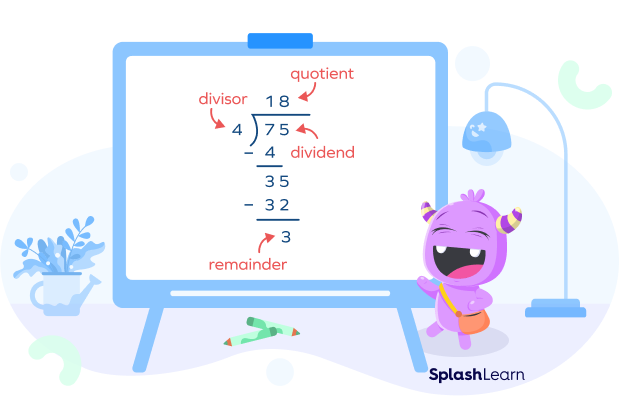
As 75 is not a multiple of 4, it is not divisible by 4 and will leave a remainder at the end.
Related Worksheets
Symbol of Division
To show that two numbers are divided, we can add a division sign ‘÷’ between them. So, for example, if we have to show 36 divided by 6, we can write it as 36 ÷ 6.
We can also show it in a fraction form as 366.
Steps to Carry Out Long Division
There are five steps to solve every long division problem with ease.
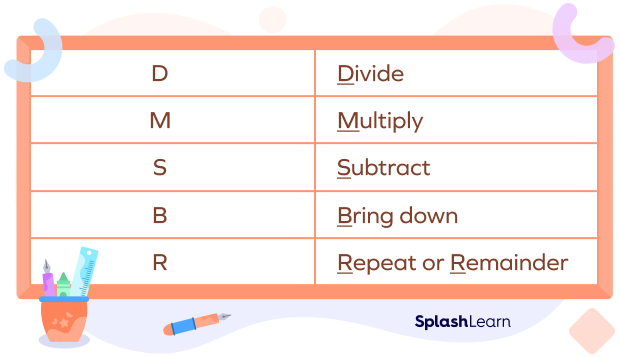
Let’s have a look at the examples given below for a better understanding of the concept.
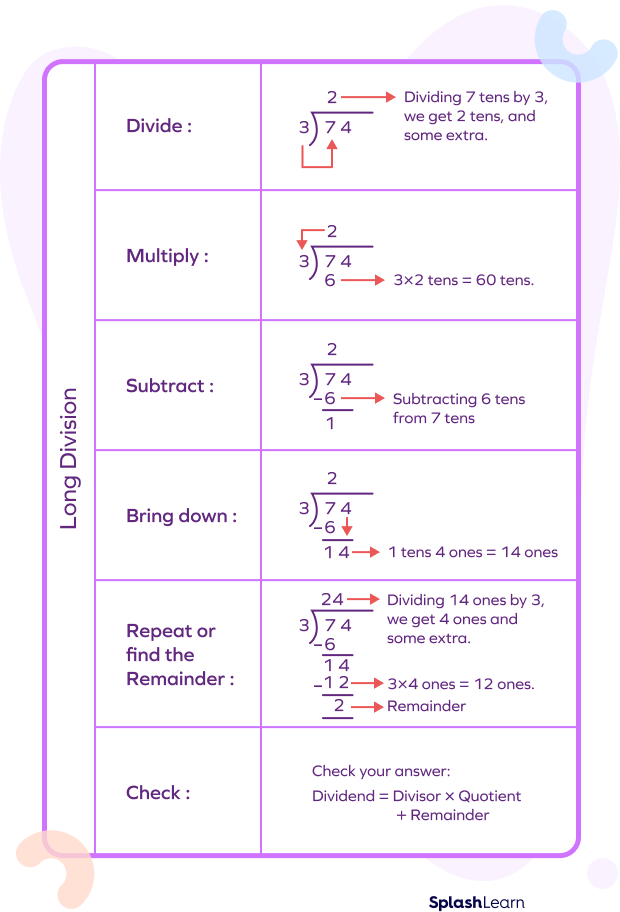
Dividing Decimals Using A Long Division
Long division can also be used to divide decimal numbers into equal groups. It follows the same steps as that of long division, namely, – divide, multiply, subtract, bring down and repeat or find the remainder.
Here’s an example of long division with decimals.
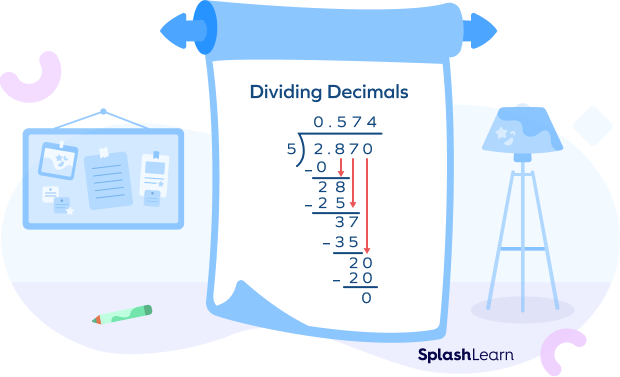
Fun Facts About Long Division
- If the dividend is 0, the quotient will always be zero.
- The remainder is always less than the divisor.
- Multiplying the quotient with the divisor and adding the remainder will give the dividend.
(Divisor x Quotient) + Remainder = Dividend
- When the remainder is 0, the dividend is the product of divisor and quotient.
Divisor x Quotient = Dividend, when remainder = 0
Conclusion
Long Division is an instrument that allows you to divide large numbers into multiple smaller groups or parts. When we divide a dividend with a divisor, the quotient obtained is the number of groups that can be made, and the remainder identifies how many elements or numbers that will be left ungrouped. To understand this concept even better, check out the wide range of interesting exercises available on SplashLearn and become a long division wiz!
Solved Examples on Long Division
Question 1: Divide 726 by 4
Ans:
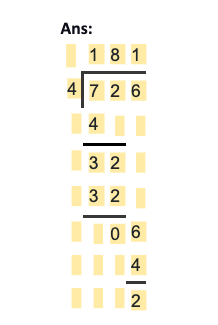
Hence, the quotient of the problem is 181, and the remainder is 2.
Question 2: What is the remainder when we divide 248 by 8?
Ans:
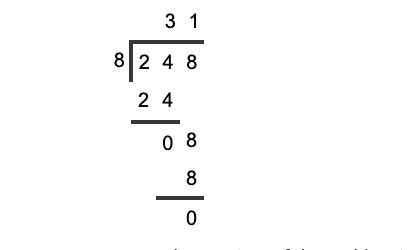
Hence, the quotient of the problem is 31, and the remainder is 0.
Question 3: Laila’s mother collected all family pictures and wanted to place all of them in an album. If each page of an album can contain 9 pictures, how many pages of the album will she need if there are 285 pictures?
Ans:
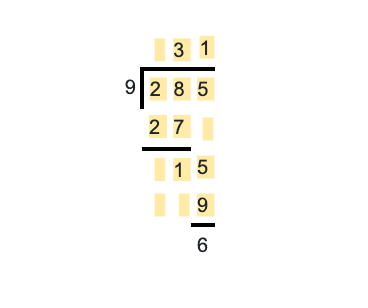
The quotient of the problem is 31, and the remainder is 6. So, she needs 31 + 1 (for the remaining six pictures) or 32 pages.
Practice Problems on Long Division
Long Division
On dividing 426 by 4, we get the remainder as
On dividing 426 by 4, we will get the quotient as 106 and remainder as 2.
Find the dividend if the divisor is 8, quotient is 71 and remainder is 4.
Dividend = (Divisor x Quotient) + Remainder = (8 x 71) + 4 = 572
Find the digit that can replace A in the following division problem.
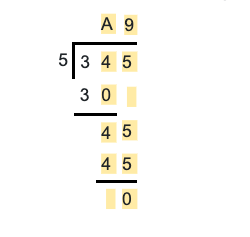
A × 5 = 30. So, A must be 30 ÷ 5 or 6.
Frequently Asked Questions on Long Division
Can the divisor be 0?
No, division by 0 is not defined in Math generally.
What is the Long Division Method?
In Math, long division is the mathematical method for dividing large numbers into multiple smaller groups or parts. The number which we divide into small groups is called the dividend, the number by which we divide is called the divisor. It helps to break down a problem into simple and easy steps.
How can we verify the quotient and remainder of a division problem?
We can verify the quotient and the remainder of the division using the division formula: (Divisor x Quotient) + Remainder = Dividend
What is the difference between long division and short division?
The short division is great for dividing larger numbers by one-digit numbers, whereas the long division is handy for dividing large numbers by numbers with two or more digits.





















